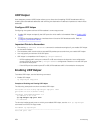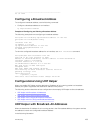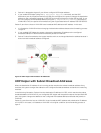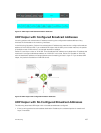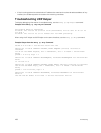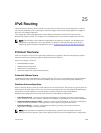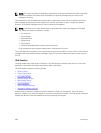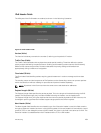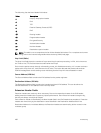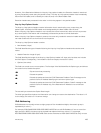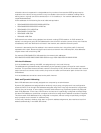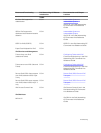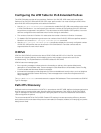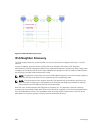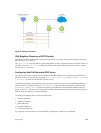
The following lists the Next Header field values.
Value Description
0 Hop-by-Hop option header
4 IPv4
6 TCP
8 Exterior Gateway Protocol (EGP)
41 IPv6
43 Routing header
44 Fragmentation header
50 Encrypted Security
51 Authentication header
59 No Next Header
60 Destinations option header
NOTE: This table is not a comprehensive list of Next Header field values. For a complete and current
listing, refer to the Internet Assigned Numbers Authority (IANA) web page.
Hop Limit (8 bits)
The Hop Limit field shows the number of hops remaining for packet processing. In IPv4, this is known as
the Time to Live (TTL) field and uses seconds rather than hops.
Each time the packet moves through a forwarding router, this field decrements by 1. If a router receives a
packet with a Hop Limit of 1, it decrements it to 0 (zero). The router discards the packet and sends an
ICMPv6 message back to the sending router indicating that the Hop Limit was exceeded in transit.
Source Address (128 bits)
The Source Address field contains the IPv6 address for the packet originator.
Destination Address (128 bits)
The Destination Address field contains the intended recipient’s IPv6 address. This can be either the
ultimate destination or the address of the next hop router.
Extension Header Fields
Extension headers are used only when necessary. Due to the streamlined nature of the IPv6 header,
adding extension headers do not severely impact performance. Each Extension headers’s lengths vary,
but they are always a multiple of 8 bytes.
Each extension header is identified by the Next Header field in the IPv6 header that precedes it. Extension
headers are viewed only by the destination router identified in the Destination Address field. If the
Destination Address is a multicast address, the Extension headers are examined by all the routers in that
multicast group.
462
IPv6 Routing



